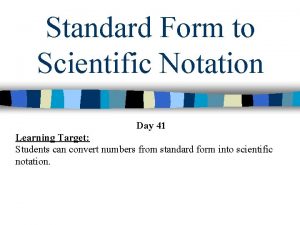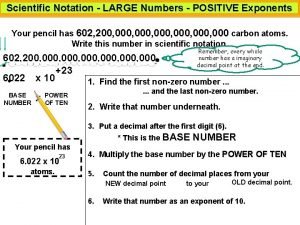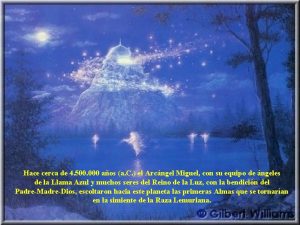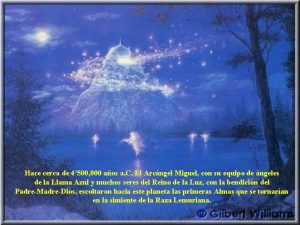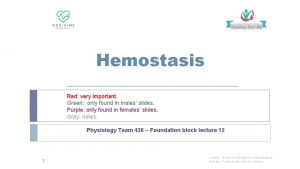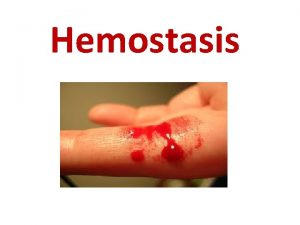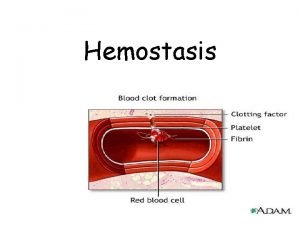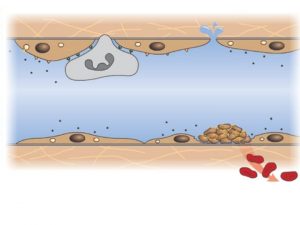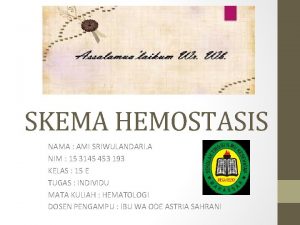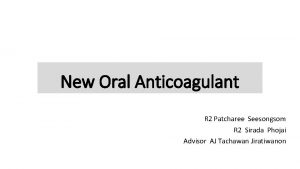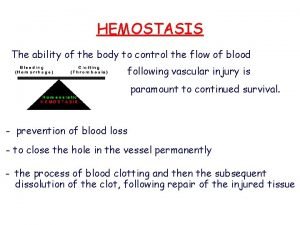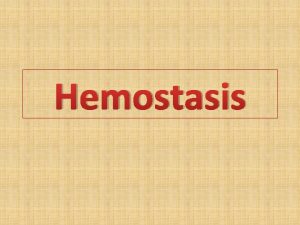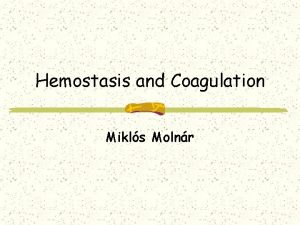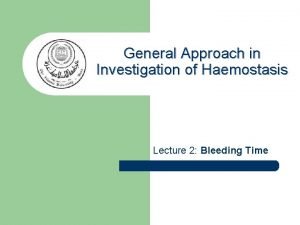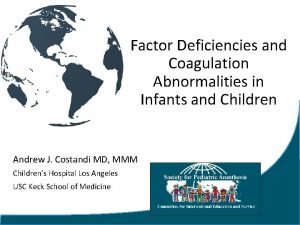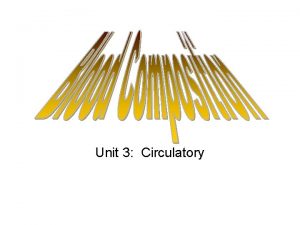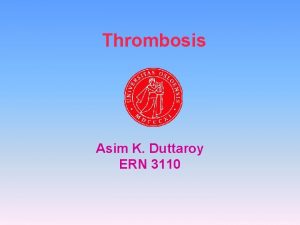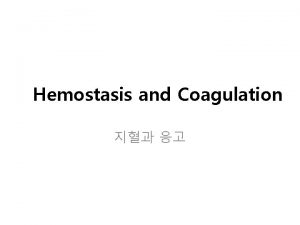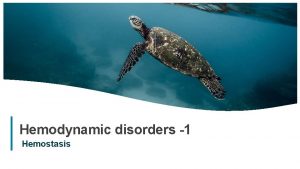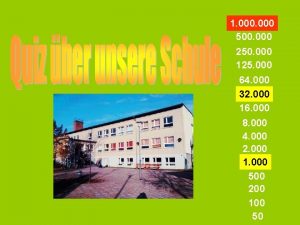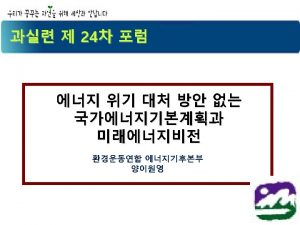Platelets and hemostasis Platelets 250 000 500 000

























- Slides: 25

Platelets and hemostasis • Platelets: 250, 000 -500, 000 cells/mm 3 • Small fragments of megakaryocytes • Formation is regulated by thrombopoietin • Thrombopoietin is a glycoprotein hormone produced by the liver and kidney which regulates the production of platelets. • Granules contain serotonin, Ca 2+, enzymes, ADP, and platelet-derived growth factor (PDGF)

Production of platelets Stem cell Developmental pathway Hemocytoblast Promegakaryocyte Megakaryoblast Megakaryocyte Platelets

Hemostasis: 1. Vessel injury 2. Vascular spasm 3. Platelet plug formation 4. Coagulation

Hemostasis Clotting Factors thromboplastin Prothrombin Thrombin Fibrinogen Fibrin Traps RBC & platelets Platelets release thromboplastin

Enhances Antithrombin Activity

Intrinsic pathway XIIa Extrinsic Pathway XIa TF Prothrombin VIII IXa VIIIa Fibrinogen VIIa Xa Va Thrombin V Soft clot Fibrin XIIIa Hard clot Fibrin

• • • • I (fibrinogen) II (prothrombin) III (Tissue factor) IV (Calcium) V(labile factor) VI VII (stable factor) VIII (antihemophilic factor A) IX (Christmas factor, antihaemophilic factor B) X (Stuart-Prower factor) XI (plasma thromboplastin antecedent, Haemophilia C) XII (Hageman factor) XIII (fibrin-stabilizing factor)


Blood Clot RBC Platelet Fibrin thread

Inside of a vessel SEM x 2, 500

Clot removal

Fibrinolysis • Enhance degradation of clots • Activation of endogenous protease • Plasminogen (inactive form) is converted to Plasmin (active form) • Plasmin breaks down fibrin clots

Fibrinolysis Plasminogen t. PA u. PA Fibrin Plasmin Fibrin Split Products (FSP)

Disorders of Hemostasis • Thrombosis or thromboembolytic disorders: undesirable clot formation • Bleeding disorders: abnormalities that prevent normal clot formation

Thromboembolytic Conditions • Prevented by – Aspirin • Antiprostaglandin that inhibits thromboxane A 2 – Heparin • Anticoagulant used clinically for pre- and postoperative cardiac care – Warfarin • Used for those prone to atrial fibrillation

Thrombocytopenia- too few platelets • causes spontaneous bleeding • due to suppression or destruction of bone marrow (e. g. , malignancy, radiation) – Platelet count <50, 000/mm 3 is diagnostic – Treated with transfusion of concentrated platelets


Impaired liver function – Inability to synthesize procoagulants – Causes include vitamin K deficiency, hepatitis, and cirrhosis – Liver disease can also prevent the liver from producing bile, impairing fat and vitamin K absorption

Hemophilia • Hemophilias include several similar hereditary bleeding disorders • Symptoms include prolonged bleeding, especially into joint cavities • Treated with plasma transfusions and injection of missing factors


Tests of Hemostasis • Bleeding Time • Coagulation Time • Prothrombin Time 21

Bleeding Time • It is the time which passes between the formation of a small cut and the stoppage of bleeding from the cut of small blood vessel • (2 -5 minutes)

Coagulation Time • It is the time which passes between the start of bleeding and the formation of a clot • (4 -8 minutes)

Prothrombin Time • The test is done by precipitating calcium ions, so blood cannot coagulate • Calcium and thromboplastins are quickly added • The time taken by blood to clot is inversely proportional to prothrombin concentration in blood • (12 -30 seconds)

Bleeding Time
 71 000 in scientific notation
71 000 in scientific notation 97 000 in scientific notation
97 000 in scientific notation Express 602200 in scientific notation.
Express 602200 in scientific notation. 4 500 000 000
4 500 000 000 4 500 000 000
4 500 000 000 4 500 000 000
4 500 000 000 4 500 000 000
4 500 000 000 0,000 0,000 0,000
0,000 0,000 0,000 Primary hemostasis
Primary hemostasis Sơ đồ đông máu
Sơ đồ đông máu 13 factors of blood clotting
13 factors of blood clotting Hemostasis
Hemostasis 1ry hemostasis prescribed by
1ry hemostasis prescribed by Virchow triad
Virchow triad Skema hemostasis
Skema hemostasis Primary hemostasis
Primary hemostasis Hemostasis process
Hemostasis process Thrombopoisis
Thrombopoisis Primary hemostasis
Primary hemostasis Case scenario
Case scenario Primary hemostasis
Primary hemostasis 3,500/500
3,500/500 Gold rush 250 000
Gold rush 250 000 Platelets are fragments of multinucleate cells called
Platelets are fragments of multinucleate cells called Fresh frozen plasma vs platelets
Fresh frozen plasma vs platelets Alpha granules of platelets
Alpha granules of platelets

